BACKGROUNDThe treatment of acute respiratory distress syndrome (ARDS) complicated by sepsis syndrome (SS) remains challenging. AIMTo investigate whether combined adipose-derived mesenchymal-stem-cells (ADMSCs)-derived exosome (EXAD) and ex
Tag: Mitochondria
When Working Out, Males Are Programmed to Burn More Fat, while Females Recycle It—at Least in Rats
Vigorous exercise burns fat more in males than in females, but the benefits of exercise are broad for both sexes.
Novel Biological Mechanism Discovered That Could Lead to New Treatments for Neurological Disorders, Cancers
The lab of Yongchao C. Ma, PhD, at Stanley Manne Children’s Research Institute at Ann & Robert H. Lurie Children’s Hospital of Chicago discovered a fundamental biological mechanism that could lead to new treatments for neurological diseases, such as spinal muscular atrophy (SMA) and autism, as well as different cancers.
Modulation of cellular recycling by calcium ion dynamics across cellular compartments
This study discovers that upon induction of different autophagy processes, mitochondria immediately import calcium and calcium concentrations at the ER membrane start to fluctuate. The major calcium import channel in the inner mitochondrial membrane, mitochondrial calcium uniporter (MCU), is required for mitophagy-inducer-initiated mitochondrial calcium uptake. Inhibiting MCU accelerates mitophagy. In neurons derived from a Parkinson’s patient, mitophagy-inducer-triggered mitochondrial calcium influx is faster, which may slow the ensuing mitophagy.
Mitochondrial activation in transplanted cells promotes regenerative therapy for heart healing
Regenerative therapy to treat heart failure is more effective when the mitochondria of the regenerative cells are activated prior to treatment.
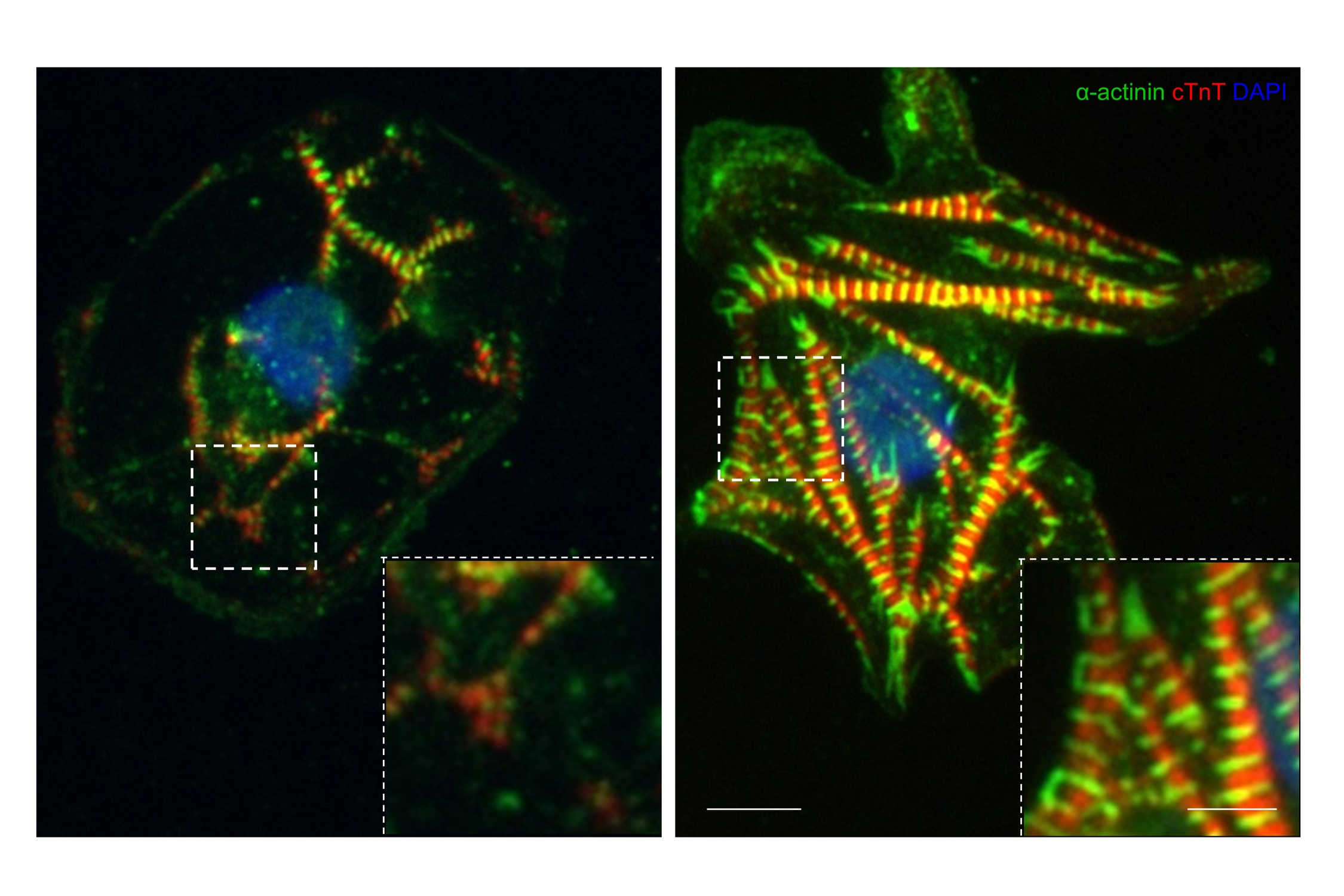
Clues to cancer drug’s deadly side effects could make it safer
For some leukemia patients, their only treatment option carries a risk of heart failure
How Obesity Dismantles Our Mitochondria
UC San Diego researchers found that when mice were fed a high-fat diet, mitochondria within their fat cells broke apart and were less able to burn fat, leading to weight gain.
Researchers Show SARS-Cov-2 Infection Affects Energy Stores in the Body, Causing Organ Failure
An international research team, including Jonathan C. Schisler, PhD, in the UNC School of Medicine, has found how SARS-CoV-2 causes widespread “energy outages” throughout major organs, and how these effects contribute to debilitating long COVID symptoms.
Transplanting Muscle Mitochondria among Species May Create Opportunity for New Treatments
Article title: Muscle mitochondrial transplantation can rescue and maintain cellular homeostasis Authors: Debasmita Bhattacharya, Mikhaela B. Slavin, David A. Hood From the authors: “Our study illustrates the feasibility of using mouse skeletal muscle-derived mitochondria for transplantation in intraspecies- and interspecies-specific…
Study Gives 3D Picture of Age-related Changes in Heart Muscle Mitochondria
Article title: Three-dimensional mitochondria reconstructions of murine cardiac muscle changes in size across aging Authors: Zer Vue, Kit Neikirk, Larry Vang, Edgar Garza-Lopez, Trace A. Christensen, Jianqiang Shao, Jacob Lam, Heather K. Beasley, Andrea G. Marshall, Amber Crabtree, Josephs…
Does Form Follow Function? Johns Hopkins Medicine Researchers Advance Understanding of Why Cell Parts Look the Way They Do
Scientists have long understood that parts of cells, called organelles, evolved to have certain shapes and sizes because their forms are closely related to how they function.
Researchers Find COVID-19 Causes Mitochondrial Dysfunction in Heart and Other Organs
A multi-institutional consortium of researchers has found that the genes of the mitochondria, the energy producers of our cells, can be negatively impacted by the virus, leading to dysfunction in multiple organs beyond the lungs. These findings suggest new approaches for treating COVID-19.
Mitochondrial Changes Linked to High Blood Pressure in Pregnancy
A new study provides evidence for the possibility that mitochondrial dysregulation could be a contributing factor in the development of hypertensive disorders of pregnancy. The study is published in Physiological Genomics. It was chosen as an APSselect article for July.
CHOP Researchers Reveal How NSAIDs Worsen C. difficile Infections
Why do nonsteroidal anti-inflammatory drugs (NSAIDs) exacerbate gastrointestinal infections by Clostridioides difficile, the leading cause of antibiotic-associated diarrhea worldwide? In a new paper published in Science Advances, researchers at Children’s Hospital of Philadelphia (CHOP) have begun to answer that question, showing that NSAIDs disrupt the mitochondria of cells lining the colon, sensitizing them to damage by pathogenic toxins.
Gulf War Illness Caused by Mitochondrial Dysfunction, Not Inflammation
UC San Diego scientists contest longstanding hypothesis about mysterious illness affecting Gulf War veterans, providing first direct evidence that symptoms are driven by impaired mitochondria.
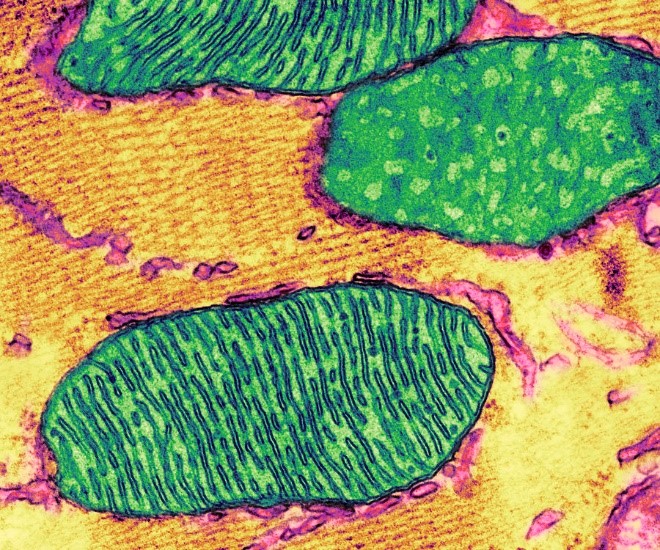
The Acute Problem of Chronic Disease
In medicine and science, the term “pathogenesis” describes the origin and development of disease. There is not, however, a broadly accepted term to describe the other half of the equation: the process of healing and recovery.

Delivery of antioxidants to liver mitochondria
A new drug delivery system delivers an antioxidant directly to mitochondria in the liver, mitigating the effects of oxidative stress.
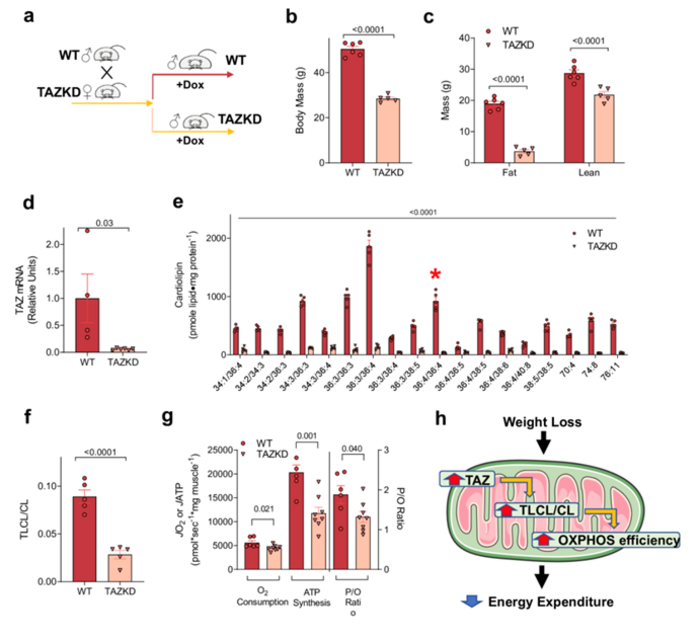
Increasing skeletal muscle mitochondrial efficiency after weight loss as a novel mechanism for lower energy expenditure
Weight regains is a common problem for weight loss individuals. A number of studies have shown that weight loss in overweight people results in a reduction in whole-body energy expenditure. This reduction in energy expenditure is disproportionate across tissues, known as energetic mismatch which primarily originates from lean tissue, thus increasing weight regain risk.
Researchers ID Protein as Mitochondrial Homeostasis Regulator
Article title: A20 binding and inhibitor of nuclear factor kappa B (NF-κB)-1 (ABIN-1)—a novel modulator of mitochondrial autophagy Authors: Rosetta Merline, Heiko Rödig, Jinyang Zeng-Brouwers, Chiara Poluzzi, Georg Tascher, Jonas Michaelis, Jaime Lopez-Mosqueda, Andrew Rhiner, Lisa Sophie Huber, Valentina Diehl,…

Malfunctioning Mitochondria at the Heart of Many Cardiovascular Diseases
Many cardiovascular diseases, such as atherosclerosis, or ‘hardening of the arteries,’ correlate to mitochondrial dysfunction and endothelial impairment in the tissues of the heart and blood vessels.
Commonly used antiretroviral drugs used to treat HIV and hepatitis B reduce immune cells’ energy production
New UCLA-led research suggests that antiretroviral drugs called TAF and TDF directly reduce energy production by mitochondria, structures inside cells that generate the power that cells use to function. Both drugs led to reduced cellular oxygen consumption rates, a measure of the ability of the mitochondria to produce energy, compared with controls.
Unlocking hidden connections between cell death and inflammation
As researchers glean new insights into the dynamic inner world of the human immune system, it has become increasingly clear that mitochondria are critical regulators of how our bodies respond to disease.
Researchers ID a Protein that Could Help Stop Cancerous Tumor Development
Article title: Decorin evokes reversible mitochondrial depolarization in carcinoma and vascular endothelial cells Authors: Thomas Neill, Christopher Xie, Renato V. Iozzo From the authors: “In conclusion, we have delineated a molecular axis focused on delivering prodepolarization signals to the mitochondrial…
Gestational Exposure to Flame Retardant Alters Brain Development in Rats
Exposure in utero to the flame retardant FireMaster® 550 (FM 550), or to its individual brominated (BFR) or organophosphate ester (OPFR) components, resulted in altered brain development in newborn rats.
Increased mitochondria and lipid turnover reduces risk for liver cancer
A study by UChicago researchers identifies the role that the BNIP3 protein plays in the development of fatty liver and liver cancer.
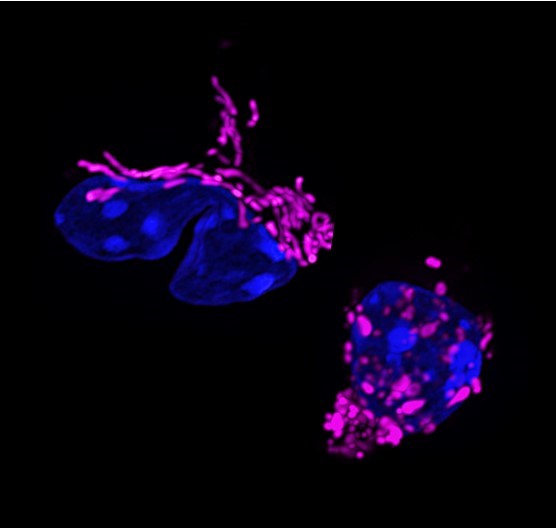
Immune Function Remodeled by Mitochondrial Shape
A new study focused on the immune system’s Th17 cells suggests that the shape and function of their mitochondria (the powerhouse of cells) is important in autoimmune and inflammatory disorders, such as multiple sclerosis.
Diaphragm Muscle Fiber Mitochondria Adapt to Varying Levels of Activity
Article title: Mitochondrial adaptations to inactivity in diaphragm muscle fibers Authors: Alyssa D. Brown, Matthew J. Fogarty, Leah A. Davis, Debanjali Dasgupta, Carlos B. Mantilla, Gary C. Sieck From the authors: “Type I and IIa [diaphragm muscle] fibers were far…
High-Tech Imaging Offers New Way to Detect Signs of Early Glaucoma
Mount Sinai study shows flavoprotein fluorescence could serve as new biomarker
Vitamin B5 May Help Weight Loss by Turning on Brown Fat
Pantothenate acid, also known as vitamin B5, stimulated the production of brown fat in both cell cultures and mice, a new study finds. “[B5] has therapeutic potential for treating obesity and type II diabetes,” researchers conclude. The study was chosen as an APSselect article for July.
Genetic roots of 3 mitochondrial diseases ID’d via new approach
Researchers at Washington University School of Medicine in St. Louis and the University of Wisconsin–Madison identified the genetic causes of three mitochondrial diseases by figuring out what dozens of poorly understood mitochondrial proteins do.
Origin of complex cells started without oxygen
The origin of complex cells started without oxygen, new research suggests.
Researchers Look to Deleted Mitochondrial Protein to Treat Heart Disease
Article title: Loss of the mitochondrial phosphate carrier SLC25A3 induces remodeling of the cardiac mitochondrial protein acylome Authors: Jessica N. Peoples, Nasab Ghazal, Duc M. Duong, Katherine R. Hardin, Janet R. Manning, Nicholas T. Seyfried, Victor Faundez, Jennifer Q. Kwong…
Metabolism expert Dr. Sara Nowinski joins Van Andel Institute
GRAND RAPIDS, Mich. (July 8, 2021) — VAI’s newest scientific recruit wants to rewrite the story of mitochondria, the cellular machinery that produces and manages the body’s energy supply.
Protein Deficiency Impairs Muscle Clock, Mitochondrial Function in Muscular Dystrophy
Article title: Dystrophin deficiency disrupts muscle clock expression and mitochondrial quality control in mdx mice Authors: Justin P. Hardee, Marissa K. Caldow, Audrey S.M. Chan, Stuart K. Plenderleith, Jennifer Trieu, Rene Koopman, Gordon S. Lynch From the authors: “These findings suggest that…
Organ Rejection Drug Rapamycin May Improve Cellular Health, Function in Myopathy Patients
Article title: Effect of rapamycin on mitochondria and lysosomes in fibroblasts from patients with mtDNA mutations Authors: Nashwa J. Cheema, Jessie M. Cameron, David A. Hood From the authors: “Treatment of [mitochondrial encephalopathy lactic acidosis stroke-like episodes] fibroblasts with rapamycin for…
Study Explores Mitochondrial Resilience in Adult Heart after Ablation
Article title: Mitochondrial functional resilience after TFAM ablation in the adult heart Authors: Nasab Ghazal, Jessica N. Peoples, Tahmina A. Mohiuddin, Jennifer Q. Kwong From the authors: “Our study highlights the need to delineate mitochondrial maintenance pathways in both developing…
University of Nebraska Medical Center researchers reveal elusive inner workings of antioxidant enzyme with therapeutic potential
The enzyme manganese superoxide dismutase helps maintain human health by keeping the amount of reactive oxygen molecules in cells under control. Using neutron scattering at ORNL, researchers obtained a complete atomic portrait of the enzyme, revealing key information about its catalytic mechanism.
Amoeba Biology Reveals Potential Treatment Target for Lung Disease
In a series of experiments that began with amoebas — single-celled organisms that extend podlike appendages to move around — Johns Hopkins Medicine scientists say they have identified a genetic pathway that could be activated to help sweep out mucus from the lungs of people with chronic obstructive pulmonary disease a widespread lung ailment.
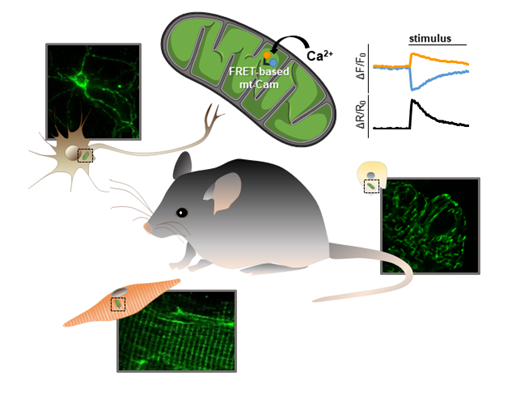
New Mouse Line Leads to Noninvasive Study of Mitochondrial Calcium Signaling
New research published ahead of print in the journal Function explores the creation of a new transgenic mouse line that allows for noninvasive study of calcium signaling in the mitochondria—the energy-releasing “powerhouse” of cells. The new mouse line, called ROSA26-mt-Cam,…
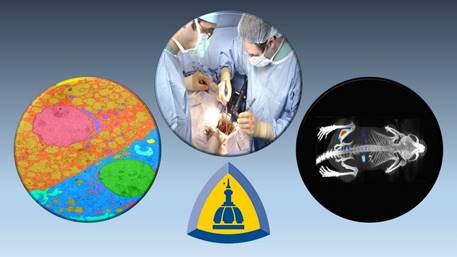
Research News Tip Sheet: Story Ideas from Johns Hopkins Medicine
During the COVID-19 pandemic, Johns Hopkins Medicine Media Relations is focused on disseminating current, accurate and useful information to the public via the media. As part of that effort, we are distributing our “COVID-19 Tip Sheet: Story Ideas from Johns Hopkins” every other Wednesday.
CHOP Researchers Find Effective Combination of Therapies for Managing Mitochondrial Disease
Researchers have demonstrated how one combination of therapies may be beneficial for patients with mitochondrial respiratory chain disorders. This preclinical research paves the way to develop more tailored treatment options for patients with inherited mitochondrial disease and acquired energy disorders.
CHOP Researchers Demonstrate How Defects in Mitochondria May Lead to Autism Spectrum Disorder
Researchers have demonstrated that autism spectrum disorder (ASD) may be caused by defects in the mitochondria of brain cells.

Research News Tip Sheet: Story Ideas from Johns Hopkins Medicine
During the COVID-19 pandemic, Johns Hopkins Medicine Media Relations is focused on disseminating current, accurate and useful information to the public via the media. As part of that effort, we are distributing our “COVID-19 Tip Sheet: Story Ideas from Johns Hopkins” every other Tuesday.

UCLA scientists develop high-throughput mitochondria transfer device
Scientists from the UCLA Jonsson Comprehensive Cancer Center have developed a simple, high-throughput method for transferring isolated mitochondria and their associated mitochondrial DNA into mammalian cells. This approach enables researchers to tailor a key genetic component of cells, to study and potentially treat debilitating diseases such as cancer, diabetes and metabolic disorders.
Mitochondria Defects May Explain Health Problems Observed in Space Travel
Using data collected from many different resources, a multidisciplinary team led by NASA scientists reports the discovery of a common but surprising thread that drives cell and tissue damage during space travel: mitochondrial dysfunction.
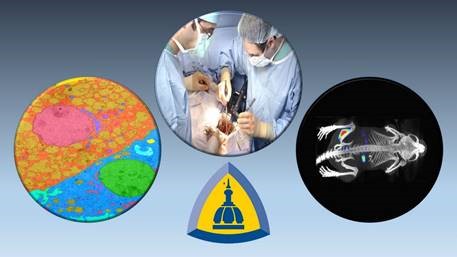
Research News Tip Sheet: Story Ideas From Johns Hopkins Medicine
During the COVID-19 pandemic, Johns Hopkins Medicine Media Relations is focused on disseminating current, accurate and useful information to the public via the media. As part of that effort, we are distributing our “COVID-19 Tip Sheet: Story Ideas from Johns Hopkins” every other Tuesday.
Researchers Find Impaired Mitochondrial and Metabolic Function in COVID-19 Patients
New research published ahead of print in the American Journal of Physiology-Cell Physiology explores the role of mitochondrial function and related metabolic changes in the inflammatory response seen in people with COVID-19, the disease caused by the SARS-CoV-2 virus. Dysfunction…

Research News Tip Sheet: Story Ideas from Johns Hopkins Medicine
During the COVID-19 pandemic, Johns Hopkins Medicine Media Relations is focused on disseminating current, accurate and useful information to the public via the media. As part of that effort, we are distributing our “COVID-19 Tip Sheet: Story Ideas from Johns Hopkins” every other Tuesday.
Study Explores Mitochondrial-directed Therapy for Carbon Monoxide Poisoning
Article title: Ex vivo use of cell-permeable succinate prodrug attenuates mitochondrial dysfunction in blood cells obtained from carbon monoxide poisoned individuals Authors: Shawn Owiredu, Abhay Ranganathan, David M. Eckmann, Frances S. Shofer, Kevin Hardy, David S. Lambert, Matthew Kelly, David H. Jang…
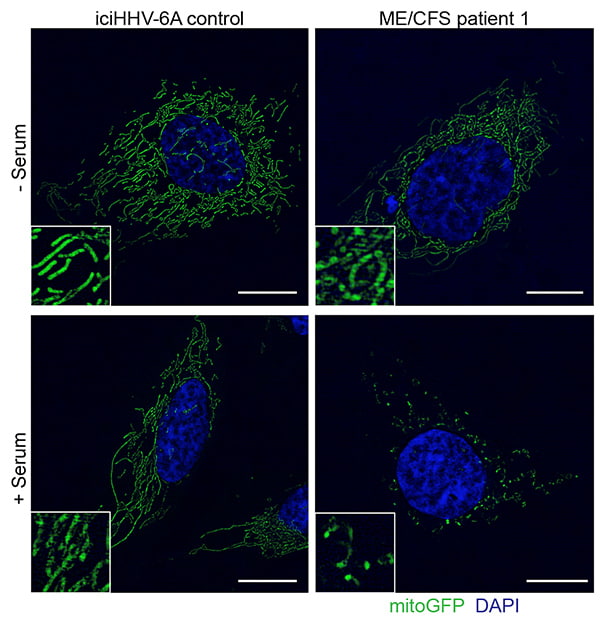
For ME/CFS Patients, Viral Immunities Come at a Devastating, Lifelong Cost
Researchers at UC San Diego School of Medicine and three German universities describe an underlying biological basis for myalgic encephalomyelitis/chronic fatigue syndrome, illustrating how efforts by the body to boost immune system protections can come at physiological cost elsewhere.